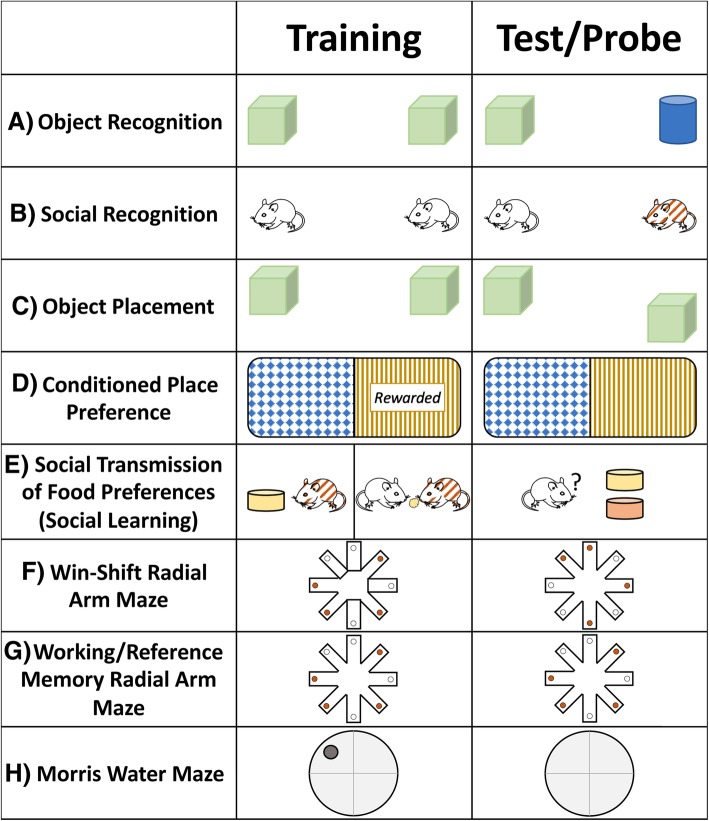Fig. 2.
Overview of behavioural tasks affected by estrogens and mentioned in this review. a Object recognition, b) social recognition, and c) object placement tasks take advantage of rodents’ innate preference for novelty. In each of task, a test rodent is presented with stimuli (typically two) to explore during training. Upon test, one stimulus is replaced with a novel stimulus (object/social recognition) or moved to a novel location. d In conditioned place preference, an animal is rewarded in one of two distinguishable contexts. A probe trial then explores the amount of time spent in the two contexts. e In the social transmission of food preferences, a “demonstrator” animal consumes a novel flavoured diet. They are then paired with an “observer” for an interaction period in which the observer will smell the novel flavoured diet on the demonstrator’s breath. When given a choice between the flavoured diet smelled on the demonstrator’s breath and another novel diet (both diets are novel to the observer), an animal with intact social learning will prefer the demonstrator’s diet. f In the win-shift version of the radial arm maze, rodents are placed in the maze and allowed to enter only a subset of the arms in order to receive rewards. Upon test phases, all arms are open, but rodents are only rewarded at the termini of formerly un-baited arms. Entries into previously baited arms are reference memory errors, whereas re-entry into arms entered during the test phase are working memory errors. Similarly, g) in the working/reference memory radial arm maze task, rodents are repeatedly rewarded in the same arms. Entries into never-baited arms are reference memory errors, whereas re-entries are working memory errors. h In the Morris water maze, an animal learns to swim to a hidden platform to escape. Probe trials then evaluate the amount of time the animal spends swimming in the quadrant previously containing the platform

